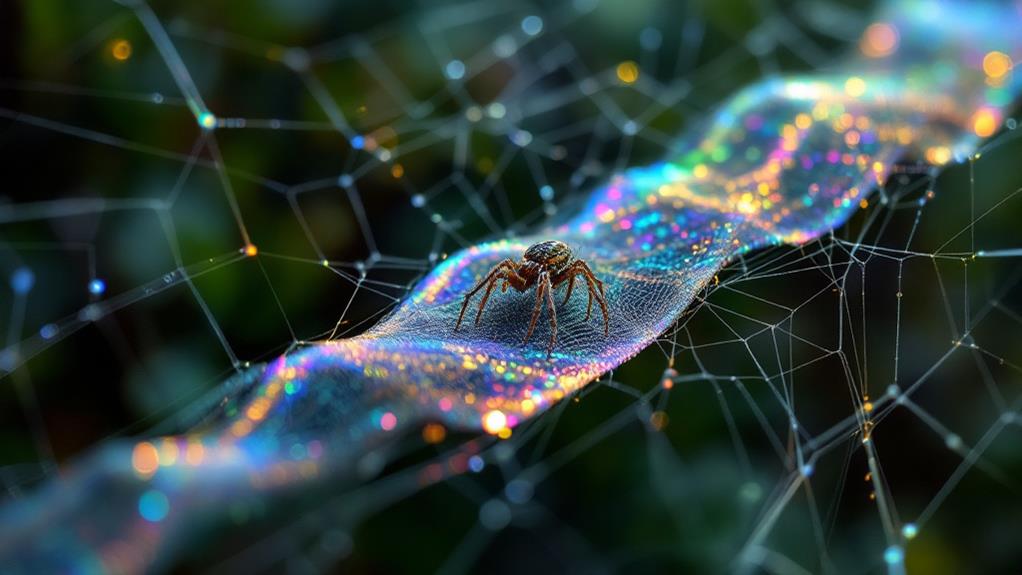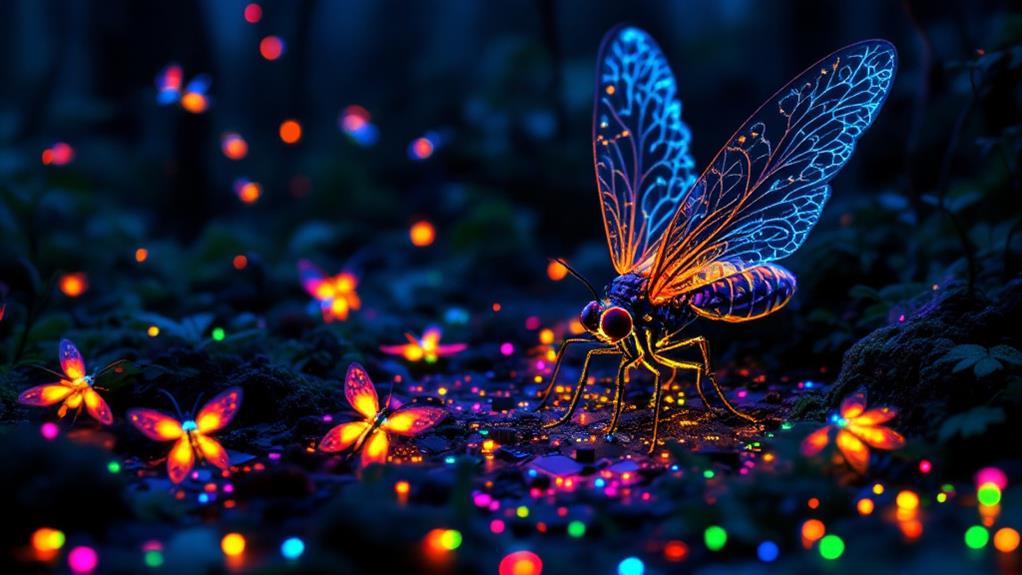The Amazing Origins of the Mirasol Display: The Science Behind Colorful Screens
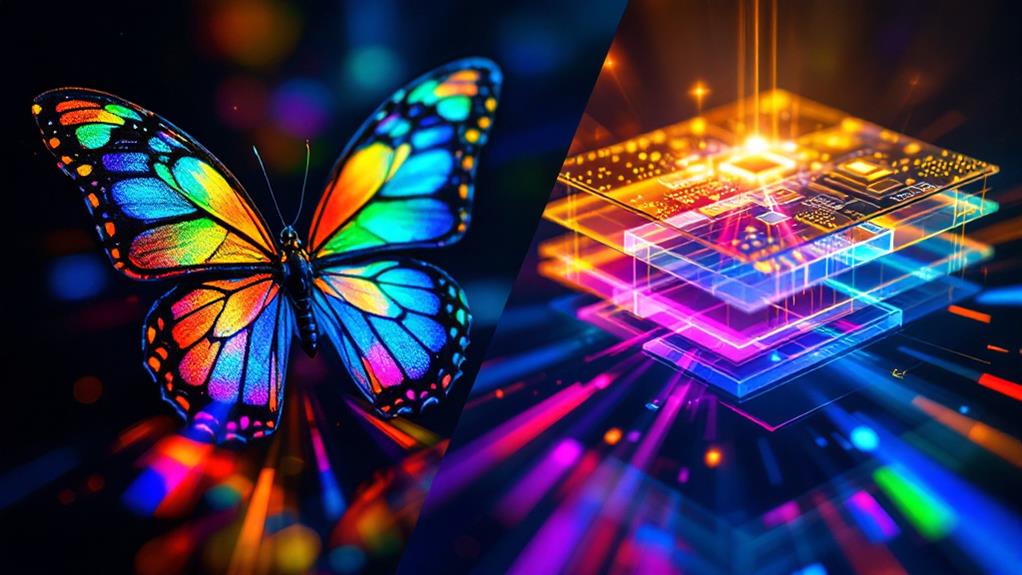
Mirasol displays draw inspiration from nature's iridescent wonders, like butterfly wings and peacock feathers. These screens use tiny mirrors to reflect light, mimicking the structural coloration found in photonic crystals. Unlike traditional LCDs, Mirasol technology employs interference reflectors and microelectromechanical systems (MEMS) to produce lively colors without a backlight. This innovative approach results in energy-efficient displays with excellent sunlight readability. While Mirasol outperforms LCDs and OLEDs in power consumption and outdoor visibility, it faces challenges in refresh rates and color intensity. As you investigate further, you'll uncover the fascinating science behind this pioneering screen technology.
Nature's Iridescent Inspiration
Many of nature's most dazzling displays come from iridescence, a phenomenon that inspired the creation of Mirasol displays. You've likely marveled at the shimmering wings of a butterfly or the lustrous feathers of a peacock. These stunning colors don't come from pigments but from a process called structural coloration.
In structural coloration, microscopic structures interact with light to produce vivid, changeable hues. These structures, known as photonic crystals, are found in various natural materials. They're arranged in precise patterns that reflect specific wavelengths of light, creating the iridescent effect you see.
Scientists studying these natural wonders realized they could mimic this process to create more efficient, radiant displays. By understanding how butterflies and beetles achieve their brilliant colors without using energy-intensive pigments, researchers developed the concept for Mirasol screens. These displays use tiny mirrors to reflect light, much like the photonic crystals in nature. The result is a low-power, high-contrast screen that's visible even in bright sunlight, bringing nature's iridescent magic to your devices.
Understanding Interference Reflectors
At the heart of Mirasol display technology lies a clever optical trick: interference reflectors. These microscopic structures manipulate light waves to produce vivid colors, much like the iridescent wings of a butterfly. You'll find that interference reflectors consist of multiple thin layers of materials with different refractive indices.
When light hits these layers, it's partially reflected and transmitted at each interface. The reflected waves interact with each other, creating an interference pattern. By carefully controlling the thickness and composition of these layers through optical layer design, engineers can tune the interference to enhance specific wavelengths of light while suppressing others.
This process of interference pattern optimization allows Mirasol displays to produce a wide range of colors with exceptional efficiency. Unlike traditional LCD screens that rely on color filters and backlights, Mirasol displays reflect ambient light, resulting in lower power consumption and better visibility in bright environments.
You'll appreciate how this technology mimics nature's own color-producing mechanisms, offering a more energy-efficient and visually appealing alternative to conventional displays. As you look at a Mirasol screen, you're witnessing the culmination of years of research into light manipulation and nanoscale engineering.
Mirasol's Microelectromechanical Systems (MEMS)
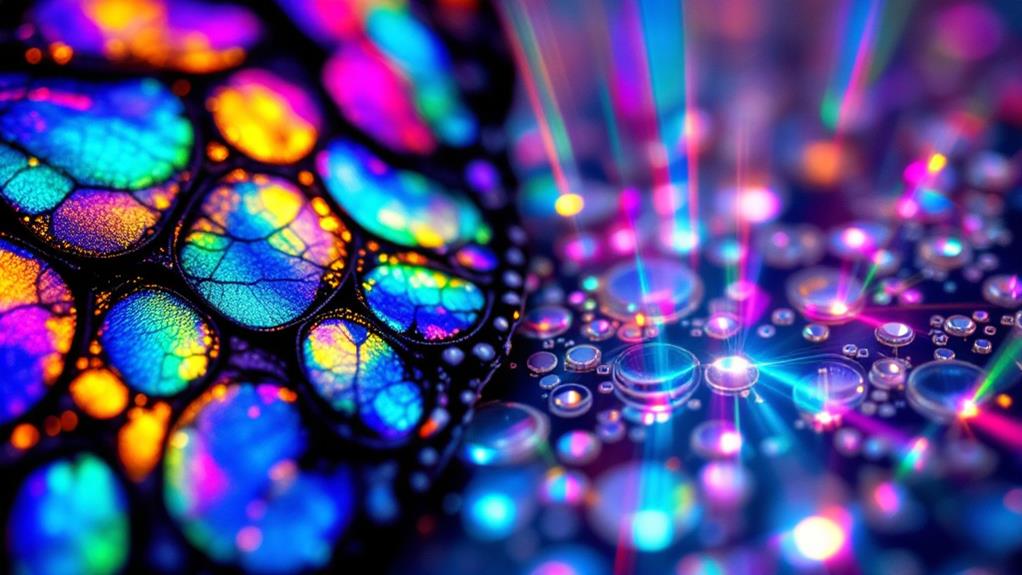
Integrating Microelectromechanical Systems (MEMS) into Mirasol displays marks a fundamental advancement in the technology. These tiny mechanical devices, measuring just a few micrometers, are the backbone of Mirasol's innovative approach to screen displays. MEMS allow for precise control of the interference reflectors, enabling the creation of lively, low-power screens.
At the heart of Mirasol's MEMS is a carefully engineered membrane structure. This structure consists of a reflective layer suspended above a fixed substrate. The gap between these two elements is essential, as it determines the wavelengths of light that will be reflected. By manipulating this gap, you can control which colors are displayed.
Electrode positioning plays a critical role in the functionality of Mirasol's MEMS. Electrodes are strategically placed above and below the membrane structure. When you apply a voltage across these electrodes, an electrostatic force is generated, causing the membrane to move. This movement alters the gap size, changing the reflected color. The precision of this electrode positioning guarantees accurate and responsive color changes, giving you a dynamic and energy-efficient display experience.
Color Production in Mirasol Displays
While traditional LCD screens rely on backlighting and color filters, Mirasol displays produce color through a fundamentally different mechanism. They use light absorption mechanisms and thin film interference principles to create vivid, energy-efficient images. When light hits the display's surface, it interacts with the MEMS structures, causing specific wavelengths to be reflected while others are absorbed.
The color production process in Mirasol displays is based on the following principles:
- Interferometric modulation: Each pixel contains multiple MEMS elements that can be adjusted to reflect different wavelengths of light.
- Structural color: The spacing between the MEMS elements determines which colors are reflected, similar to how butterfly wings produce color.
- Subtractive color mixing: By combining different MEMS elements, a wide range of colors can be produced through the selective absorption and reflection of light.
You'll notice that Mirasol displays don't require a backlight, making them highly visible in bright sunlight. The technology's unique approach to color production results in screens that are both energy-efficient and easy on the eyes. As you use a Mirasol display, you're experiencing a revolutionary method of color generation that mimics nature's own light-manipulating techniques.
Energy Efficiency and Sunlight Readability
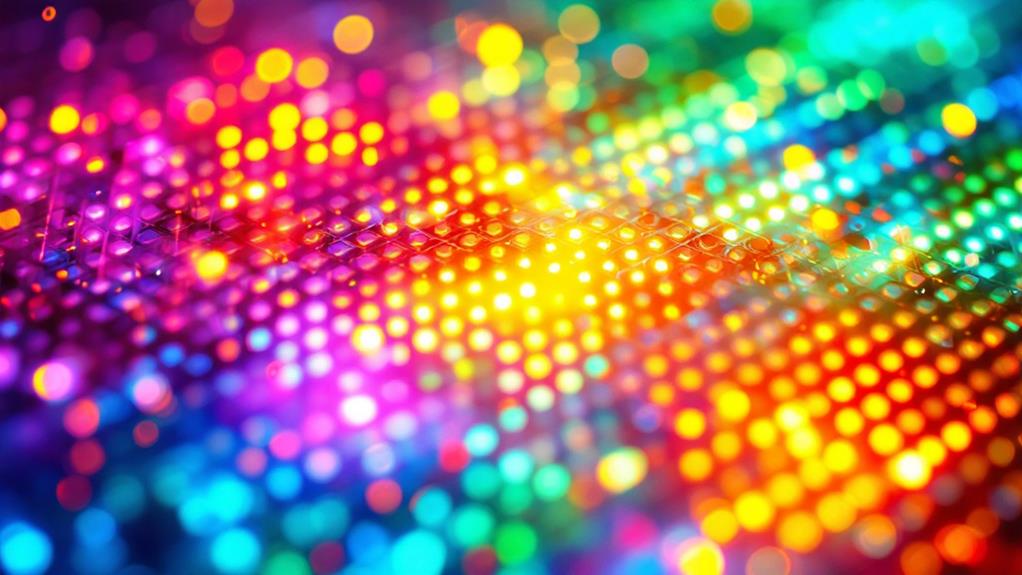
Mirasol's energy-saving prowess and sunlight readability are two of its standout features. You'll find that these displays consume considerably less power than traditional LCD screens, thanks to their innovative use of ambient light. Unlike LCDs that require constant backlighting, Mirasol displays reflect existing light to create images, much like how you'd read a printed page.
This unique approach not only conserves battery life but also enhances outdoor visibility. You can easily read a Mirasol screen in bright sunlight, where conventional displays often struggle. The technology's reflective nature means that the brighter your surroundings, the clearer the display becomes. This is a transformative development for outdoor use, whether you're reading an e-book at the beach or checking your smartwatch during a run.
The energy efficiency of Mirasol displays extends beyond just power savings. By reducing the need for frequent charging, you'll find that devices using this technology can be lighter and more compact. This combination of low power consumption and excellent outdoor visibility makes Mirasol an ideal choice for portable devices, especially those you use in varied lighting conditions.
Comparing Mirasol to Other Technologies
When stacked up against other display technologies, Mirasol offers a unique set of advantages and trade-offs. You'll find that it excels in certain areas while falling short in others. Compared to LCD and OLED screens, Mirasol displays consume significantly less power, making them ideal for devices with long battery life requirements.
In terms of screen manufacturing processes, Mirasol technology is quite different from traditional methods. It relies on interferometric modulation, which uses tiny mirrors to reflect light and create colors. This approach sets it apart from the pixel-based systems used in most other display technologies.
- Sunlight readability: Mirasol outperforms LCDs and OLEDs in bright outdoor conditions
- Color reproduction: OLED and high-end LCDs offer more lively colors than Mirasol
- Refresh rate: Mirasol displays have slower refresh rates, making them less suitable for video playback
It's necessary to note that Mirasol hasn't gained widespread adoption in the consumer electronics market. This is partly due to its limitations in color reproduction and refresh rates, which have made it less appealing for smartphones and tablets where these features are paramount.
Future Applications and Developments

Innovators and tech enthusiasts are keenly exploring new horizons for Mirasol display technology. You'll find this state-of-the-art display making its way into a variety of devices, from e-readers and smartwatches to automotive displays and outdoor signage. As the technology evolves, you can expect to see Mirasol screens with improved color accuracy, faster refresh rates, and higher resolutions.
One of the most exciting developments is the potential integration of Mirasol displays into flexible and foldable devices. This could alter the way you interact with your gadgets, offering enhanced user experiences through unique form factors. Imagine a smartphone that unfolds into a tablet-sized screen, all while maintaining the power efficiency and outdoor readability of Mirasol technology.
Furthermore, design innovations are pushing the boundaries of Mirasol's capabilities. You might soon encounter transparent Mirasol displays in smart windows or augmented reality glasses. These advancements could convert everyday objects into interactive surfaces, blending digital information seamlessly with the physical world. As research continues, you can look forward to Mirasol displays becoming an integral part of your future tech ecosystem.

